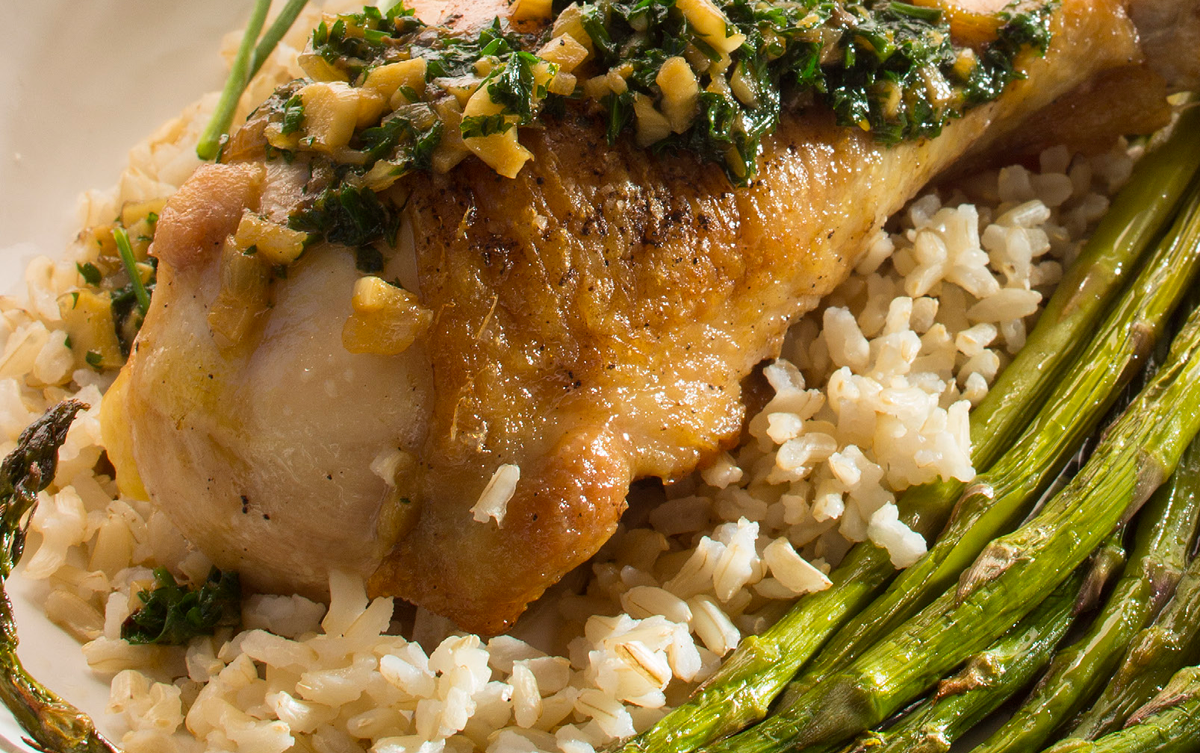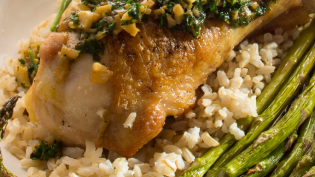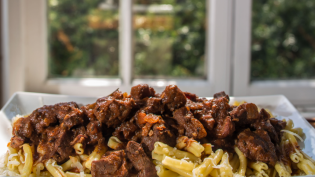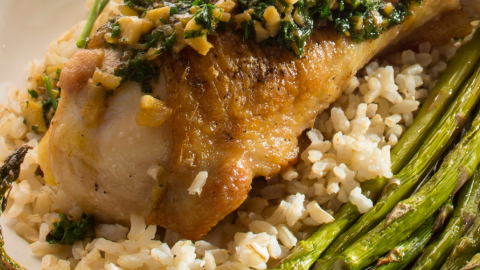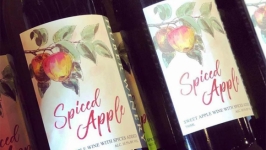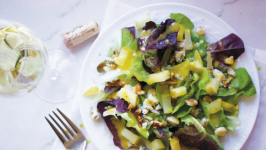Cooking Fresh: A Splash of Magic
Feeding a family of six while working full time, whatever my mother made for dinner had to be easy. One standby — probably the easiest recipe of all — was veal cutlet pan fried and then splashed with Martini & Rossi white vermouth. Those were the days when veal cutlet was cheap and chicken breast wasn’t available. It was also a time when not many people drank wine but lots of people drank martinis.
For her purpose, vermouth — a fortified wine that has a longish shelf life — was the easy choice to deglaze the pan used to brown the meat. You “deglaze” when you use a liquid of some kind to loosen the browned bits of meat stuck to the pan. The brown bits, which have flavor, will suspend in the liquid, which then becomes “sauce.” And you become a “good cook.”
It was a simple formula complicated later by the proliferation of wine styles and types that became increasingly available (and, for some, preferable to martinis). Culinary tomes and periodicals would often answer questions about what wine a cook should use in recipes by saying, “Any wine that’s good enough to drink.”
As a young cook, that wasn’t much of an answer for me. I was inexperienced in both cooking and drinking wine. And I was plenty confused about what wine people thought was good enough to drink.
In the context of your kitchen, cooking with wine should be simple. Your goal is twofold: First, to add complex flavor in very short order to a sauté or stew or risotto or sauce. A little or a lot of wine can do that.
Second, the frugal cook would think it wasteful to throw out a splash or more of flavorful liquid like leftover wine. A glug or two of wine in a pot of browning short ribs or chicken thighs transform their flavor. In truth, salt and pepper are all that’s required to make a finished dish, though fresh herbs and aromatics are also welcome. In most cases, if I have leftover white wine and the recipe calls for red, I’ll substitute the white rather than open a new bottle. For the most part, the wine you drank last night is good enough for the dish you’re simmering today, or tomorrow, or four days from now.
The simple sauté starts with a little fat in the pan, a dry piece of meat or two — steak or chicken or pork chops — so that there is room in the pan between the pieces. The meat should be seasoned with salt and pepper, and it can be coated with flour or not. It should be browned well on both sides and turned only once (turning cools the meat and reduces browning, so you can easily overcook the meat before it’s sufficiently browned). When brown and cooked through, the meat is removed from the pan and the wine is added, boiled down to a few tablespoons to concentrate its flavor and served as a sauce over the meat. If you are super fancy, you can add a tablespoon of cold butter to the hot pan and beat it swiftly, which will emulsify the butter into the sauce, thickening and enriching it.
That’s the simplest way to use wine in cooking. The recipes for Herbed Chicken Sauté and Sunday Pork Ragout (both at the upper left) are more involved.


